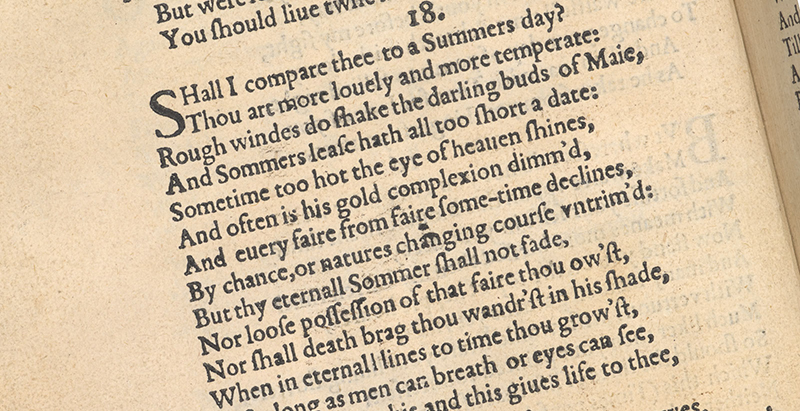

The final couplet, as a rule, differs in rhyme and rhythm from the preceding lines. Usually each quatrain adds a new aspect to the overall line of thought, or the thesis of the first quatrain is complemented by its antithesis in the second or third one. The external structure corresponds to the line of argumentation developed in the sonnet. It has lines in iambic pentameters with an alternating rhyme. In Thorpe’s edition, the first 126 sonnets describe a passionate relationship between the poet and a young man known as the fair youth. These sonnets appeared together for the first time in 1609 in a complete edition published by Thomas Thorpe. The Shakespearean sonnet falls into three quatrains with a rhyming couplet at the end. In the first decade of his career as a poet and dramatist, Shakespeare penned 154 sonnets.The Italian sonnet consists of an octave with an embracing rhyme and a sestet with an alternating rhyme.For comparison, the table below places them side by side: The English or Shakespearean sonnet differs sligthly from its model in form. It quickly appears that such neglect might be attributed to the continuing centrality of the Romantic construction of Shakespeare as a sublime figure that embodies Nature and as a man of the mob (Richard Wilson). It is written in one stanza consisting of fourteen lines that rhyme in an intricate pattern. This paper attempts to uncover some of the reasons why the Elizabethan sonnet sequences have received little critical attention in France. The sonnet is a lyrical form that can be traced back to the Italian Renaissance poet FRANCESCO PETRARCH (1304–1374). Rough winds do shake the darling buds of May,Īnd summer's lease hath all too short a date.


 0 kommentar(er)
0 kommentar(er)
